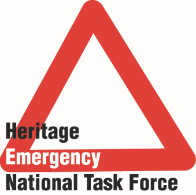- About Archives
- About SAA
- Careers
- Education
- Publications
- Advocacy
- Membership
Arts organizations and cultural institutions that have been impacted by Hurricane Harvey may be eligible for Federal assistance via:
If your institution is affiliated with a government agency, such as a state university or a county or municipality, you should communicate with that agency regarding your damage and any expenditures (overtime of personnel, purchases, etc.) to protect your facilities. The information below doesn’t necessarily apply to your institution because your expenditures will be included as part of your government agency – but only if it is aware of your damage.
If you are private nonprofit organization unaffiliated with any government agency, apply for FEMA Public Assistance (PA) and an SBA disaster loan.
Only certain private nonprofit (PNP) organizations are eligible under FEMA’s Public Assistance Grant Program. To be an eligible applicant, the PNP must show that it has:
Additionally, for a facility to be eligible, the PNP must own or operate the facility and provide a service that is:
For more information on eligibility of PNPs, refer to the Public Assistance Program and Policy Guide at https://www.fema.gov/public-assistance-policy-and-guidance.
Applicant Briefing
The Applicant Briefing provides a high-level overview of the Public Assistance (PA) Program. The topics it normally covers include:
See the Applicant Briefing confirmation memo, along with the Applicant Briefing PPT. Note: You do not have to attend an Applicant Briefing in order to file a Request for Public Assistance. Additional briefings will be conducted once additional counties are included in the declaration. (Dates to be determined.) Complete the forms and submit them at any time prior to the deadline for your county.
The following forms must accompany your application:
Applicants should send their RPA to:
tdemrecovery.rpa@dps.texas.gov
A new deadline has been set for submitting Requests for Public Assistance (RPAs). The new deadline is 5:00 pm Central, Tuesday, October 31, 2017. This deadline supersedes the later deadlines of November 22, December 14 and December 17.
For questions about Public Assistance, please contact:
Karen Beard
Recovery Officer
Texas Division of Emergency Management (TDEM)
Texas Homeland Security
Texas Department of Public Safety
O: (512) 242-7822
F: (512) 424-2424
karen.beard@dps.texas.gov
Non-Critical PNPs – most arts organizations and cultural institutions – must first apply to the Small Business Administration for disaster assistance. If denied by SBA or if your costs exceed what SBA covers, then FEMA may be able to provide you with assistance.
There are several types of loan programs available to private nonprofits. They include:
|
Types of Loans |
Borrowers |
Purpose |
Maximum Amount |
|
Business Loans “Physical” |
Businesses and private |
Repair or replace real estate, equipment, furniture, etc. |
$2 million |
|
Economic Injury Loans |
Small businesses & private |
Economic injury disaster loans or working capital loans |
$2 million |
|
Mitigation |
Businesses, private |
Mitigate / prevent future loss to real property |
20% of verified physical damage. Homeowners limited to $200,000. |
Hours are 8 a.m. to 6 p.m. weekdays and 9 a.m. to 4 p.m. weekends unless otherwise noted. The property damage application deadline is Oct. 24, 2017. The deadline to apply for economic injury is May 25, 2018.
|
County |
BRC Location |
|
Aransas |
Women’s Club of Aransas County, 1104 Concho St., Rockport, TX 78382 |
|
Harris |
University of Houston Small Business Development Center Region Office, 2302 Fannin St. - Suite 200, Houston, TX 77002 |
|
Nueces |
Port Aransas Community Center (next to the museum), 408 N. Alister St., Port Aransas, TX 78373 |
|
Fort Bend |
Fort Bend County Sienna Annex, 5855 Sienna Springs Way - Room 111, Missouri City, TX 77459—7 a.m. – 7 p.m. daily |
|
Jefferson |
Lamar University Center for Innovation, Commercialization and Entrepreneurship (CICE), 5091 Rolfe Christopher Drive, Beaumont, TX 77705 |
More information is available at https://www.sba.gov/disaster-assistance. You can also email disastercustomerservice@sba.gov or call (800) 659-2955. Individuals who are deaf or hard of hearing may call (800) 877-8339.

FEMA and the Smithsonian Institution co-sponsor the Heritage Emergency National Task Force, a partnership of 42 national service organizations and federal agencies created to protect cultural heritage from the damaging effects of natural disasters and other emergencies.